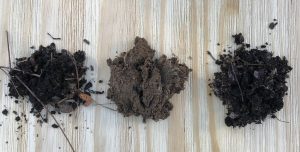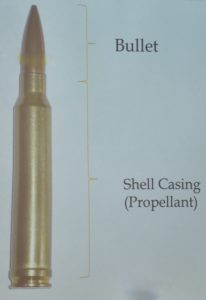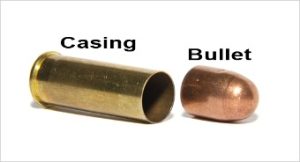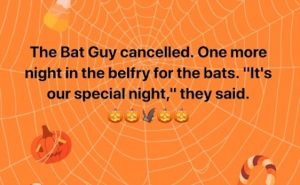KN, p. 320 “The Power of Forensic Geology”

If there are no paragraph separations in the article, please double-click on the title to create a more readable version.
The practice of Forensic Geology helps resolve legal disputes, can determine the location of the scene of a crime, can absolve (or help convict) persons of interest in murder cases, and more.
Several TV crime shows feature forensic geology as part of the process of solving a case. From dirt on a victim’s clothes, to odd fibers in the area of the body, the CSI evidence collection team assesses the crime scene (if known) and gathers everything they deem pertinent to the deadly deed. If the person was found in a pond or lake, samples of the water itself are collected to be compared with water found later during an autopsy. If a vehicle is used to transport a body, floor mats are a treasure trove for the discovery of soil samples that can reveal where the killer was, and therefore may point to the actual crime scene.
North Carolina Forensic Geologist, Heather Hanna, spoke at a Writers’ Police Academy conference in 2019 and mentioned the principle of Locard’s Exchange, acknowledged by forensic scientists in murder cases: “Every contact leaves a trace. Everywhere you go, you pick up something and leave something behind.”
Comparison of unknown to known
Soil analysis begins with the collection of samples. Whether CSI techs in the lab, or forensic geologists, they must have something with which to compare the potential evidence. These days there are national data bases that contain specific files dealing with the area of interest – bullets, guns, tire treads, sneakers…and the list goes on. For the geologist, specialty sources deal with rocks, dirt, feathers, plants, and mineral samples, etc. from around the world. A click on the computer keyboard leads to (almost) readily available comparisons.
Hanna also revealed that forensic geology can be used to authenticate old papers. It can be determined whether they are forgeries or the real thing by checking what’s in the ink. Over the years, different minerals have been used in the making of ink, and some inks are now made with synthetic materials – a dead giveaway when an ‘ancient’ treasure map has a modern chemical contained in the drawing of the tomb that hides the gold.
The Dodson Case *
In order to create an airtight case for murder, the suspect should have motive, means, and opportunity. In 1995, investigators suspected that Janice Dodson had killed her husband of three months while on a hunting trip. The prosecution had discovered the motive: cashing in on the life insurance policy.
A search of the area uncovered a .308 caliber shell casing and a bullet. The husband had been shot three times, but since it was a hunting location, it was impossible to connect the bullets to the murder without the rifle. Perhaps coincidentally, the ex-husband was hunting nearby and owned the rifle most likely to be the murder weapon, but he had reported the rifle and bullets stolen while he was away from the tent. His whereabouts were substantiated. The rifle was never found in order to prove the means, but the initial investigators were savvy enough to collect and keep the wife’s clothing in evidence.
Janice Dodson said she was in a specific hunting area while her new husband was being murdered, but the soil sample on the clothes retained in evidence for several years, later proved otherwise. Only one muddy region yielded the exact match to the dirt on her clothes, but it wasn’t her alibi spot, finally proving she had the opportunity to commit the crime. Her alibi didn’t hold up and she was arrested in 1998. The jury felt that meeting two of the three requirements was sufficiently compelling and Dodson was convicted in 2000.
Murder is not the only crime that can be solved through the use of forensic geology. Mine fraud can cause millions of dollars of loss to investors.
Bre-X Mine Fraud Case
Worthless mines and desperate engineers can create a dangerous combination, so it’s good to know that there are ways to keep swindling in check. Felderhof and de Guzman, two geologists short of cash, sought to sell a gold mine in Borneo. One small problem: hardly any gold was left in the mine. But, undaunted by that detail, de Guzman went to Borneo in 1992 and reported it as a viable mine.
A year later, Canadian businessman David Walsh, owner of Bre-X, bought the mine in Borneo for $80,000 because of de Guzman’s report. A few months after that, drilling revealed the truth, that very little gold was actually there…in the first two holes. Mysteriously, lots of gold was found in subsequent drilling and the mine became a hot commodity on the stock exchange.
Enter the Americans. In 1997, an American mining company opted to buy part ownership of the mine. That company’s geologists tested the third hole and discovered from samples that the hole contained man-made gold and copper alloy. More sample testing divulged planted gold that came from other mines. When they sought to check the core samples from the original testing, it appeared those samples had all been thrown away, all the records gone. The American company contacted Felderhof and de Guzman, wanting to know what was going on. Nine days later in Borneo, de Guzman died in a questionable fall from a helicopter, his body found with hands and feet removed. The mine was declared worthless. Billions of dollars had been lost.
David Walsh died of natural causes. Felderhof was charged with insider trading, but was acquitted in 2007. The massive fraud perpetrated by Bre-X prompted the Canadian government to stiffen its mining regulations. Victims included pension funds.
Fake Art
Before art collectors plunk down millions of dollars for paintings created by the Old Masters, the work is authenticated by experts, and certified by the art houses brokering the sales. The basic things to check are the age of the canvas, the brushwork techniques, and the provenance (who owned it and where it’s been). Part of the forensic detection of art fraud might include identifying a mineral contained in the paint that had not been available during the century the painting was purported to have been created.
Art fraud is a serious problem for collectors. Skilled forgers can make several copies of an original. Eager collectors might not realize they’ve been duped in a private sale, where not enough questions are asked. I was told recently that some museums commission forgers to paint a duplicate to hang on the wall, while the original is kept safely out of sight of would-be thieves.
*Information about the Dodson case: murderpedia.org
KN, p. 320 “The Power of Forensic Geology” Read More »






